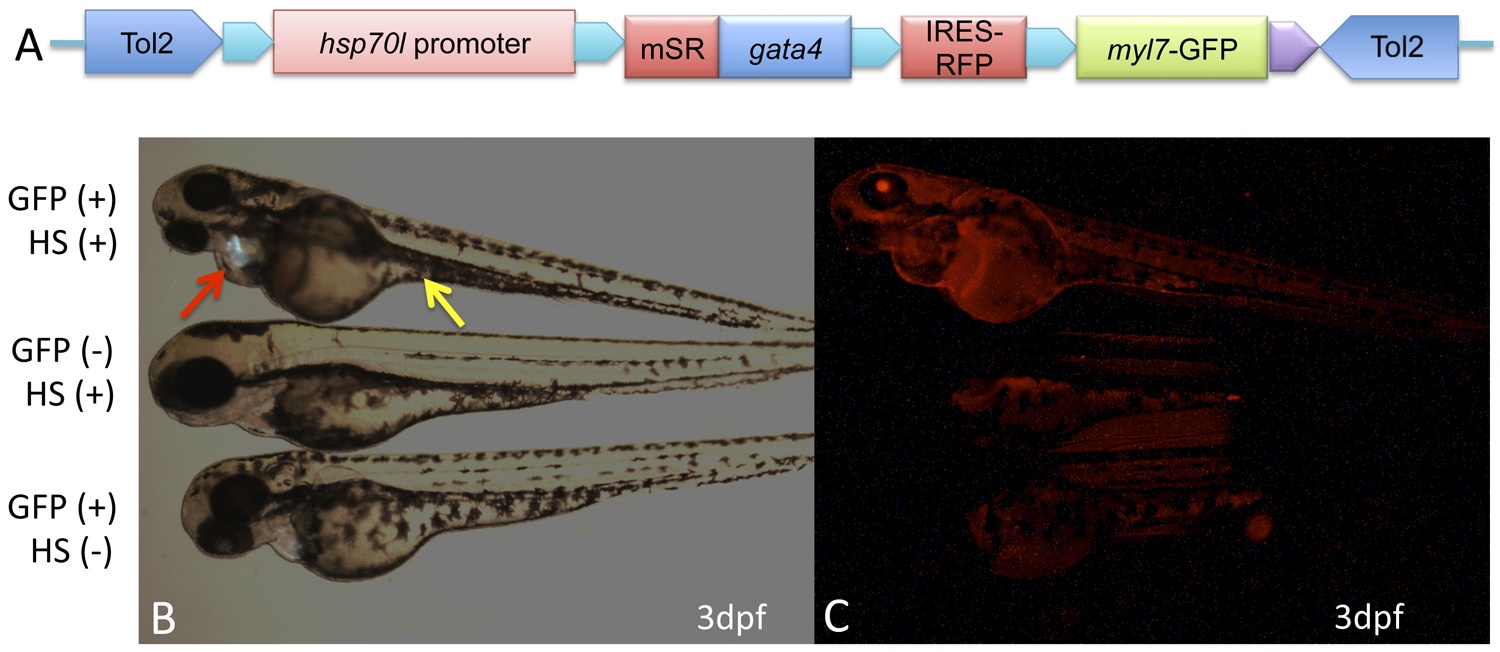Fig. s6 Conditional expression of SR-Gata4 phenocopies the gata4 morphant. A) The schematic shows the transgenic construct used to generate lines of tg(hsp70I:sr-gata4) zebrafish. In the context of a tol2-flanked destination vector, the hsp70I promoter was used to direct expression of SR-Gata4, followed by an IRES that allows co-expression of RFP (cherry). An myl7 promoter directing expression of GFP to the heart is also present as a marker for transgenesis. B) Shown are representative examples of three cohorts of embryos obtained by crossing zebrafish heterozygous for the transgene, imaged under fluorescence with the green channel. The top embryo is GFP+, indicating that the embryo carries the transgene. This embryo was also heat-shocked at 37C for one hour, in this case at 5, 24, and 27 hpf. The embryo in the middle was treated the same, but is GFP-, indicating that this sibling does not carry the transgene. The bottom embryo is GFP+ (transgenic) but was kept at 28.5C (no heat shock, HS-). Note that only the top embryo shows the characteristic gata4 morphant phenotype: an improperly looped heart and pericardial edema (red arrow) and a failure in the yolk stalk extension (yellow arrow). C) The same embryos were imaged under the red channel, showing that only the top embryo expresses RFP, since it is the only embryo that is both transgenic and heat shocked. Essentially every transgenic embryo shows this heat-shock dependent phenotype (n>100).
Image
Figure Caption
Acknowledgments
This image is the copyrighted work of the attributed author or publisher, and
ZFIN has permission only to display this image to its users.
Additional permissions should be obtained from the applicable author or publisher of the image.
Full text @ PLoS One

